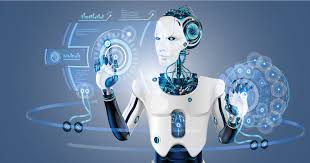What if your business could run like a well-oiled machine, with repetitive tasks handled flawlessly in minutes? That’s the power of Robotics Process Automation (RPA), a technology that’s turbocharging efficiency for companies worldwide. From slashing costs to freeing up your team for creative work, RPA is a game-changer. In this article, we’ll break down what Robotics Process Automation is, how it works, its benefits, and why it’s the future of smart business – all in a way that’s clear, exciting, and easy to read.
What is Robotics Process Automation ?
Robotics Process Automation, or RPA, is software that automates repetitive, rule-based tasks by mimicking human actions. Picture a digital assistant that tirelessly handles data entry, invoice processing, or customer queries with pinpoint accuracy. Unlike physical robots, RPA “bots” live in your computer systems, interacting with apps, websites, and databases just like a person would.
Leading RPA platforms like UiPath, Automation Anywhere, and Blue Prism are making this technology a reality for businesses big and small. Whether you’re a startup or a global enterprise, Robotics Process Automation is redefining productivity.
Read more: https://www.ibm.com/think/topics/rpa
How Does Robotics Process Automation Work ?
RPA bots follow programmed workflows to tackle tasks. Here’s the process in a nutshell:
- Task Identification: Pinpoint repetitive, rule-based processes (e.g., extracting data from forms or sending routine emails).
- Bot Configuration: Developers use RPA tools to create bots with step-by-step instructions, often via user-friendly drag-and-drop interfaces.
- Integration: Bots work with existing systems—no need for expensive rehauls. They can log into software, copy data, or generate reports seamlessly.
- Execution: Bots run tasks on schedule or on-demand, delivering error-free results at lightning speed.
For instance, an RPA bot can process 100 invoices in minutes, compared to hours for a human, with zero errors. Advanced RPA systems even incorporate AI to handle trickier tasks, like analyzing unstructured data or making decisions.
Applications of Robotics Process Automation
Robotics Process Automation shines across industries. Here are some top ways it’s being used:
1. Finance and Accounting
RPA streamlines tasks like accounts payable, receivable, and reconciliation. Bots extract invoice data, validate transactions, and update ledgers, saving hours of manual effort. A 2024 Gartner report estimates RPA can cut finance process costs by up to 30%.
2. Customer Service
RPA bots tackle routine customer queries, process refunds, or update CRM systems like Salesforce. This lets human agents focus on complex issues, improving customer satisfaction. Companies like Amazon rely on RPA to manage high-volume support tickets.
3. Healthcare
In healthcare, RPA automates patient scheduling, billing, and claims processing. Bots ensure compliance with regulations like HIPAA while reducing errors. For example, RPA can process insurance claims 50% faster than manual methods.
4. Supply Chain and Logistics
RPA optimizes inventory management, order processing, and shipment tracking. Bots monitor stock levels, generate purchase orders, and notify suppliers, keeping operations smooth. DHL uses RPA to automate logistics workflows.
5. Human Resources
RPA simplifies HR tasks like onboarding, payroll, and resume screening. Bots schedule interviews, update employee records, and more, letting HR teams focus on strategy. Studies show RPA can cut HR process times by up to 60%.
Benefits of Robotics Process Automation
- Efficiency: RPA bots complete tasks in seconds or minutes, outpacing human speed.
- Cost Savings: Automation slashes labor costs, with 70% of RPA adopters seeing ROI within 12 months, per Deloitte.
- Accuracy: Bots eliminate human errors, ensuring consistent, high-quality results.
- Scalability: RPA bots handle workload spikes instantly, no hiring required.
- Employee Satisfaction: By offloading tedious tasks, RPA lets staff focus on creative, meaningful work.

Why Robotics Process Automation Matters
Robotics Process Automation isn’t just about saving time or money—it’s about unlocking smarter ways to work. It empowers businesses to operate with precision and agility while giving employees space to innovate. Whether you’re a CEO eyeing growth or a manager seeking efficiency, RPA is your ticket to the future.
The RPA market is skyrocketing, projected to reach $25 billion by 2030, according to Statista. Pairing RPA with AI and machine learning is creating “intelligent automation,” capable of handling dynamic tasks like natural language processing or predictive analytics. Cloud-based RPA is also rising, offering flexibility and lower costs. https://blog.makaiindustry.com/2025/05/11/computer-vision-development/
Hyperautomation—combining RPA with AI, IoT, and analytics—is the next big thing, enabling end-to-end automation of complex processes. As RPA becomes more affordable, even small businesses will tap into its potential.
Ready to jump in ? Try a free trial of platforms like UiPath or Automation Anywhere, or consult an RPA expert to spot automatable tasks in your business. With Robotics Process Automation, productivity isn’t just a goal – it’s a reality.
